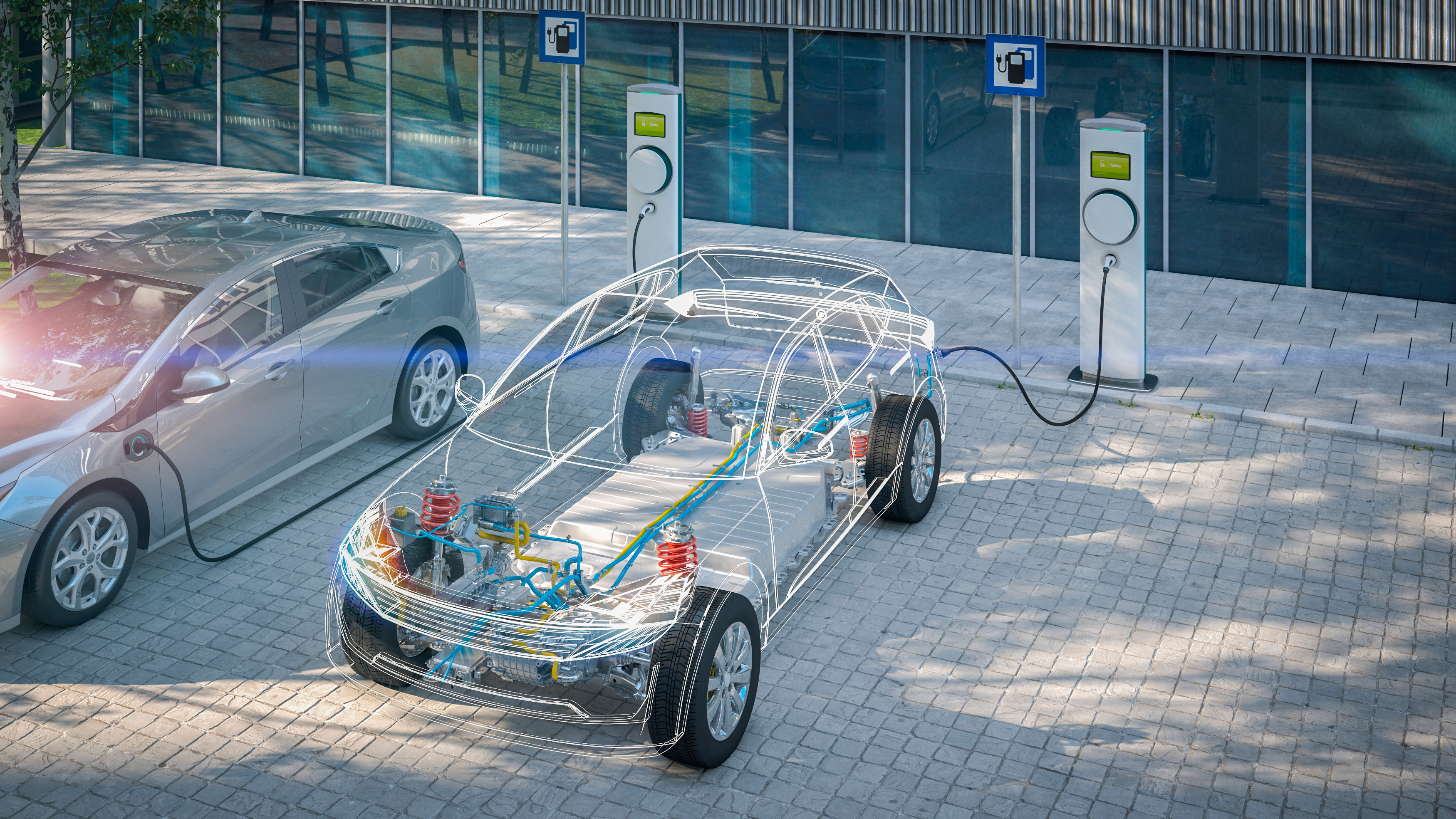Addressing issues such as increasing battery autonomy, installing more charging points, or using renewable sources to generate electricity, is crucial to continue advancing towards sustainable mobility goals.
Did you know that getting around by car is an increasingly sustainable practice? One of the alternatives to reduce your mobility carbon footprint are electric vehicles that, if powered by a renewable energy source, achieve net zero carbon emissions.
The future of driving is closely linked to electromobility, which is why people are increasingly encouraged to change their travel habits with the trend being towards electrification. But in order for these changes to reach all users and bring about a real automotive revolution in the short term, there are certain technical, technological, and administrative aspects that need to evolve and be highlighted.
What types of electric cars are available?
One of the most important points about electric mobility is that there is no one, single way to enjoy all its benefits.
Different types of electrification technologies for cars can be found on the market, each with its own characteristics and features, which can be easily adapted to the needs of each driver.
First, there are battery electric vehicles (BEVs) or pure electric vehicles, which run 100% on electricity stored in a battery that needs to be recharged frequently. But we can also find fuel cell electric vehicles (FCEV), which generate electricity through electrolysis, or extended range electric vehicles (E-REV), in which an additional heat engine is added.
Hybrid cars are also protagonists in this form of mobility, being a really useful alternative to facilitate the transition between this new model and the traditional one. This includes the plug-in hybrid electric vehicle (PHEV) with an electric motor and a combustion engine, the hybrid electric vehicle (HEV), where the electric motor assists the combustion engine, and the micro-hybrid electric vehicle (MHEV) with a mild hybrid and a heat engine.
Advantages of electric cars
Thanks to technological innovation and the many advances that are being implemented every year, vehicles powered by electricity are becoming increasingly practical, convenient, and cost-effective. Not to mention the important benefits they can bring at the environmental level and in the fight against climate change.
Implementation in Spain
According to data collected by ANFAC (Spanish Association of Automobile and Truck Manufacturers) in its latest Annual Report, 311,186 registrations for this type of vehicle were reached in 2021, 30% more than those registered in 2020.
Electrification is gaining presence among the Spanish vehicle fleet, but, even so, it is still below the targets set in the PNIEC (National Integrated Energy and Climate Plan 2021-2030). This text proposed a series of objectives to be achieved by 2030, both in relation to the number of passenger cars and the number of charging points. But, as we can see from the latest data collected in ANFAC's Q3 2022 Electromobility Barometer, the figures in 2022 fall far short of the desirable targets. Furthermore, the outlook for the future seems to be slower than expected, given the current rate of implementation.
Challenges facing electric mobility
Improving the rate of expansion of electric vehicles is essential to ensuring the energy transition and achieving the decarbonization targets that have been set. This is why, in order to successfully promote the shift and make the purchase of electric vehicles more appealing to users, it is essential to first address a series of challenges associated with this form of mobility.
Issues related to electric batteries, charging points, the electricity source, and the price of these cars, which can help change public perceptions about their efficiency and autonomy.
Electric batteries
One of the most important elements of an electric car is the battery, as it stores the energy needed to generate movement. The first challenge we face with this component is that manufacturing a battery is not a simple task, especially because it requires the use of materials such as graphite, nickel, and cobalt, which are currently in short supply and are considered critical minerals. This leads to marketing problems associated with their extraction and importation from third countries, resulting in price increases and unstable demand, which often slow down production chains.
Accessing these materials may not only complicate the manufacturing of batteries, but there is also the added dilemma of what to do with them once the battery has reached the end of its useful life. For example, nickel and lithium generate waste that can be highly hazardous if not properly treated with methods that are also abrasive and generate emissions. This currently makes recycling batteries neither a cost-effective nor a fully effective process, so further research in this field to promote the circular economy is very important.
Another point to take into account with respect to batteries is the improvement of their autonomy or the time they can run without having to be charged. Currently, the range is between 200 and 350 kilometers for mid-range vehicles, but there are new models that can reach up to 600 and 750 km. Gradually increasing these figures will help reduce the number of charges users have to make and allow them to plan longer trips without having to stop.
Charging points
Taking into account the data from ANFAC, charging points in 2022 did not reach 20,000, although the target pledged in the Recovery, Transformation, and Resilience Plan was 45,000. The installation rate of charging points is insufficient to achieve the objectives. Therefore, it is necessary to expand this network to make the charging process more convenient and accessible to drivers. Without neglecting, of course, the importance of proper maintenance of the existing points to ensure that users can make use of them without any problems.
To a large extent, the administrative barriers in granting licenses and permits are a direct cause for the slow pace of rolling out the charging infrastructure. There is no common regulation that unifies the processes and criteria required to obtain one of these licenses, with permits that depend directly on the DGT (General Directorate of Highways) and others that are managed by each city council and autonomous community. Moreover, the procedures and paperwork with the distribution companies are a bottleneck due to their lengthy turnaround times. This means that the procedures to be carried out are not easy and that delays accumulate, hindering the entire process from the outset.
In addition to having more electric vehicle charging points throughout the country, reducing battery charging time is also a factor to be taken into account. Nowadays, the standard waiting time would be between 4 and 8 hours in a household environment, but little by little new, much faster charging currents and higher voltages are being implemented, which allow the charging time to be considerably reduced. This is the case for ultra-fast charging points, which are still rare and only available for the latest cars, where you only need to spend between 5 and 10 minutes.
Electricity source
In order to make the environmental impact of electromobility as positive as possible, we cannot ignore the question of where the energy used to charge the car comes from.
There is no use in increasing the fleet of electric vehicles and reducing emissions in this way, if unsustainable methods are used to produce all this electricity whilst CO2 levels in the atmosphere continue to rise.
That is why we have to ensure that this electricity is always generated from renewable energy sources, such as solar, wind, or geothermal. In Spain, green energies have gone from generating 29% of electricity in 2012 to 42% in 2022, according to data from Red Eléctrica de España. Continuing to increase this percentage is essential if we want the use of electric cars to generate a reduction in CO2 emissions.
Vehicle pricing
One of the most decisive barriers that users encounter when it comes to choosing this type of transport and making the decision to purchase it, is its price. Usually, buying an electric vehicle comes with a higher price tag than a traditional combustion car, so it is not uncommon for some people to think twice before making an investment that is so significant financially speaking.
In order to remedy this situation and further promote the expansion of electromobility in our country, various public subsidies and grants have been implemented to provide financial assistance to users. Such is the case for the MOVES III Program, with incentives not only for purchasing cars but also for installing charging points. There are also tax incentives in the form of rebates or deductions, which can be of real benefit to consumers and must continue to be promoted.
As of today, electric mobility still faces many challenges if it is to captivate users and represent a real turning point for the decarbonization of road transport. To go even deeper into all these issues, the Repsol Foundation’s Energy Transition Education and Research Program, the Technical University of Madrid, and ASEPA have organized a webinar on the evolution of the implementation of electric vehicles in Spain in order to better understand the situation we are in with respect to the electrification of vehicles and what objectives must be achieved.




